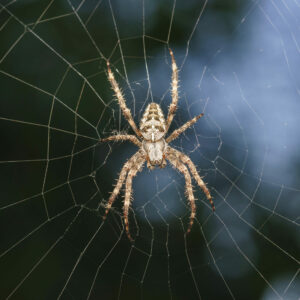Garden Spider
Garden Spider
Araneus diadematus
It is Halloween after all so it seems appropriate to spolight the Spider! The Garden Spider or White Cross Spider (named after the distinctive white cross on its abdomen) is the most common of the Orb Weaver Spiders in the UK. This Spider creates the picture book webs seen in photographs, measuring up to 40 cm in diameter and taking about two hours to weave
This is one of the biggest of UK’s Spider species, growing to about 13 mm in length. Favouring woodland, garden and grassland habitats, it feeds on a diet of flies, wasps and other flying insects.
The Garden Spider weaves a large web of gossamer silk at night ready to trap any flying insects. Alerted by the vibrations of the prey caught in the web, the Spider delivers a paralysing bite and enshrouds the insect in silk, to be consumed later. It is important to emphasise this Spider is completely harmless to humans
Mating takes place in the Summer, the female lays her eggs in a silken cocoon and will not leave her eggs, protecting them until the late Autumn, when she will die from the cold. The eggs will not hatch until the follwing May, emerging as a mass bundle of brilliant yellow spiderlings. For the male, reproduction is a precarious and often fatal experience, as the female may kill and eat her mate after mating
The connection with Spiders and Halloween is due to their long association with witches. Spiders have been thought to be the evil companions of witches since the Middle Ages
